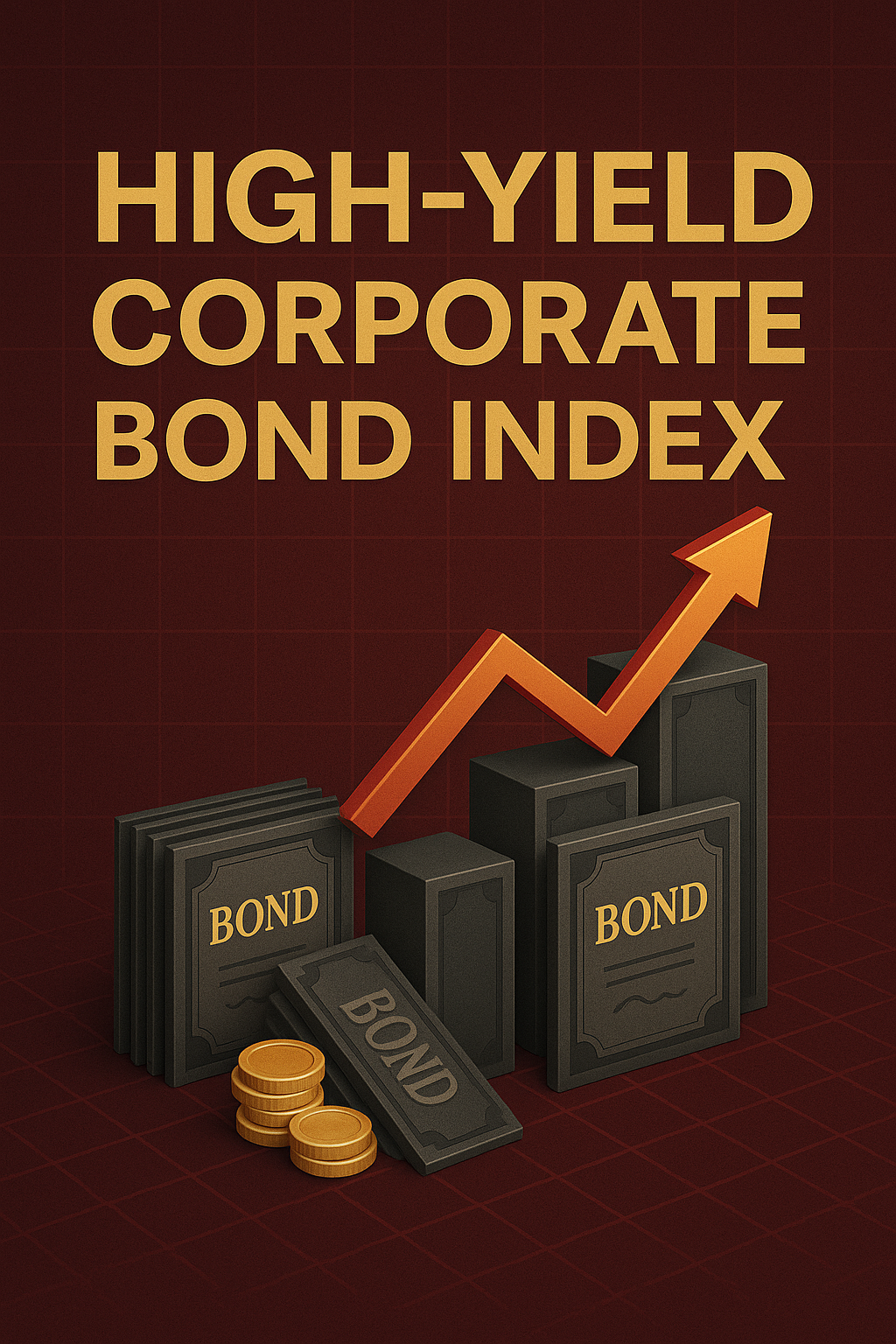Corporate Bond Index is a benchmark that aggregates below‑investment‑grade (BB+ / Ba1 or lower) US dollar corporate bonds into one market‑value‑weighted universe, letting investors track overall “junk bond” yield, spread and total‑return trends.

1. Why High‑Yield Matters
Because coupons on sub‑BBB debt compensate investors for default risk, high‑yield indices often deliver equity‑like returns—yet with bond‑style cash flows. Consequently, asset allocators use the benchmark as both a tactical income sleeve and a gauge of credit sentiment.
2. How the Index Is Built
| Eligibility Filter | Typical Cut‑off |
|---|---|
| Credit Rating | Ba1/BB+ or below by Moody’s/S&P/Fitch |
| Currency | USD‑denominated |
| Issue Size | ≥ US $150 million face value |
| Time to Maturity | ≥ 1 year at entry; drops when < 1 year remains |
| Excluded Structures | Convertibles, perpetuals, floating‑rates, emerging‑market sovereigns |
Monthly rebalancing adds new issues (often called “junk prints”) and removes matured or upgraded bonds.
3. 2025 Snapshot
- Market Value: ≈ US $1.4 trillion
- Number of Issues: ~2 150
- Yield‑to‑Worst: 8.6 % (April 2025)
- Option‑Adjusted Spread (OAS): 392 bp over Treasuries
- Duration: 4.2 years
BB‑rated paper dominates weight (~51 %), while CCC‑and‑below accounts for ~11 %, supplying most of the volatility.
4. Recent Performance
| Year | Total Return | Default Rate* |
|---|---|---|
| 2022 | ‑11.2 % | 1.8 % |
| 2023 | +13.3 % | 3.6 % |
| 2024 | +7.5 % | 3.0 % |
| YTD‑2025 | +1.9 % | 2.4 % (proj) |
*Par‑weighted, US domiciled.
5. What Drives Index Spreads
- Economic Growth. Faster GDP trims downgrade risk, narrowing OAS.
- Rates Direction. HY duration is low, yet rising yields can still weigh on price.
- Sector Mix. Energy and Telecom names swing spreads the most.
- Liquidity Conditions. ETF flows amplify moves during stress or euphoria.
6. Uses for Investors
- Income Generation. Coupons exceed IG by ~350 bp on average.
- Equity Substitute. Lower drawdowns than stocks in many recessions.
- Relative‑Value Play. Traders pair long HY vs. short IG to isolate credit beta.
ETFs such as HYG or JNK replicate the index for low‑cost access, albeit with minor sampling error.
7. Key Risks
- Default & Recovery. Average recovery is 40 ¢ on the dollar—below IG.
- Callable Structure. Many bonds refinance early when rates fall, capping upside.
- Liquidity Gaps. Bid‑ask spreads widen fast during risk‑off episodes.
Active managers, therefore, tilt toward industries with improving leverage and cash‑flow visibility.
8. Looking Ahead
With 11 % of the HY universe maturing by end‑2026, refinancing needs collide with elevated base rates. However, stronger interest‑coverage ratios today versus pre‑COVID suggest default rates may stay below long‑run averages—unless a severe recession materialises.
Key Takeaways
- The high‑yield corporate bond index tracks US‑dollar “junk” debt, offering yields near 9 % and OAS around 400 bp.
- Monthly rebalances keep weights fresh; BB credits dominate risk.
- Income and diversification appeal, but default, liquidity and call‑risk demand vigilance.